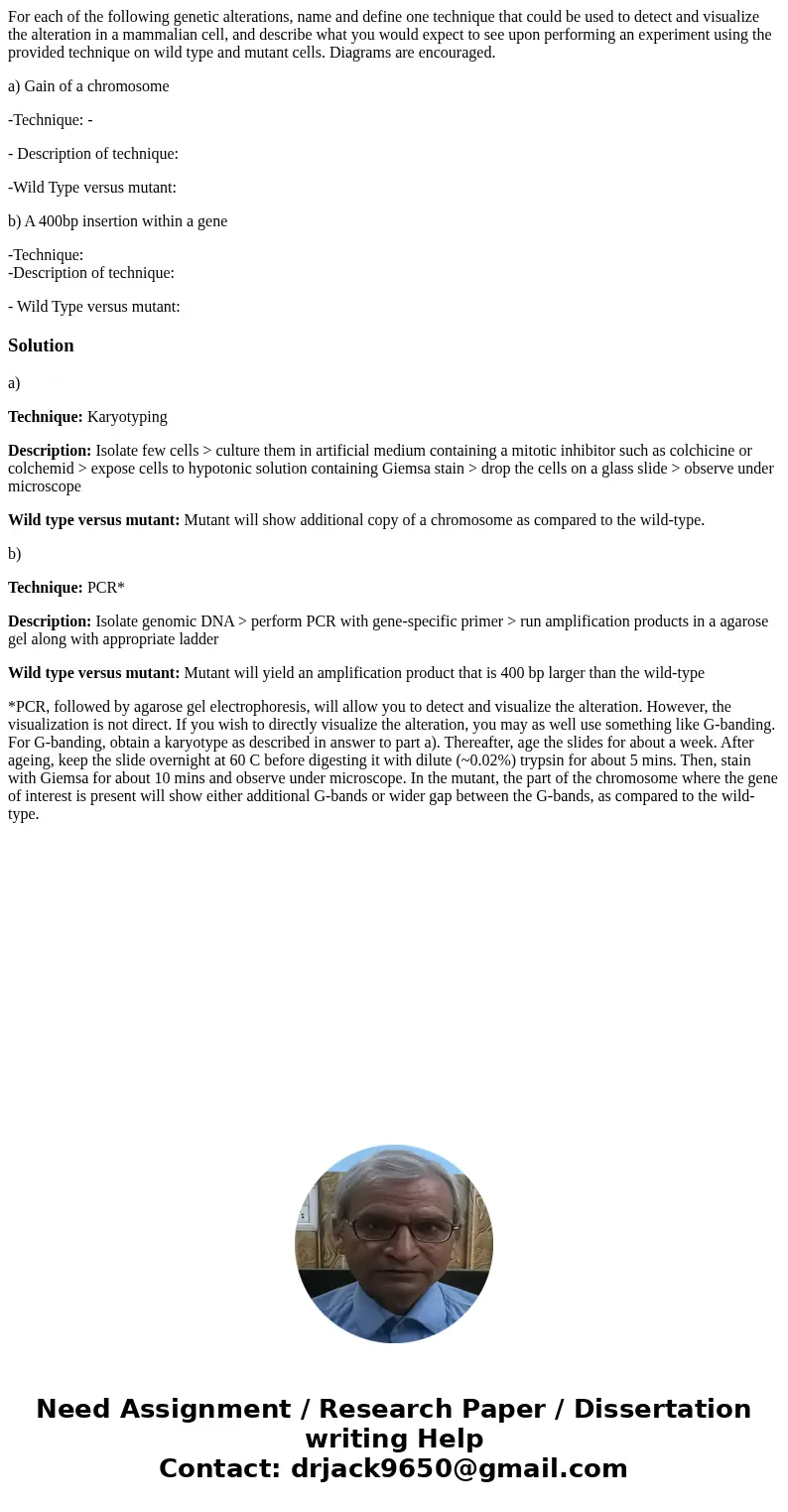For each of the following genetic alterations name and defin
For each of the following genetic alterations, name and define one technique that could be used to detect and visualize the alteration in a mammalian cell, and describe what you would expect to see upon performing an experiment using the provided technique on wild type and mutant cells. Diagrams are encouraged.
a) Gain of a chromosome
-Technique: -
- Description of technique:
-Wild Type versus mutant:
b) A 400bp insertion within a gene
-Technique:
-Description of technique:
- Wild Type versus mutant:
Solution
a)
Technique: Karyotyping
Description: Isolate few cells > culture them in artificial medium containing a mitotic inhibitor such as colchicine or colchemid > expose cells to hypotonic solution containing Giemsa stain > drop the cells on a glass slide > observe under microscope
Wild type versus mutant: Mutant will show additional copy of a chromosome as compared to the wild-type.
b)
Technique: PCR*
Description: Isolate genomic DNA > perform PCR with gene-specific primer > run amplification products in a agarose gel along with appropriate ladder
Wild type versus mutant: Mutant will yield an amplification product that is 400 bp larger than the wild-type
*PCR, followed by agarose gel electrophoresis, will allow you to detect and visualize the alteration. However, the visualization is not direct. If you wish to directly visualize the alteration, you may as well use something like G-banding. For G-banding, obtain a karyotype as described in answer to part a). Thereafter, age the slides for about a week. After ageing, keep the slide overnight at 60 C before digesting it with dilute (~0.02%) trypsin for about 5 mins. Then, stain with Giemsa for about 10 mins and observe under microscope. In the mutant, the part of the chromosome where the gene of interest is present will show either additional G-bands or wider gap between the G-bands, as compared to the wild-type.

 Homework Sourse
Homework Sourse